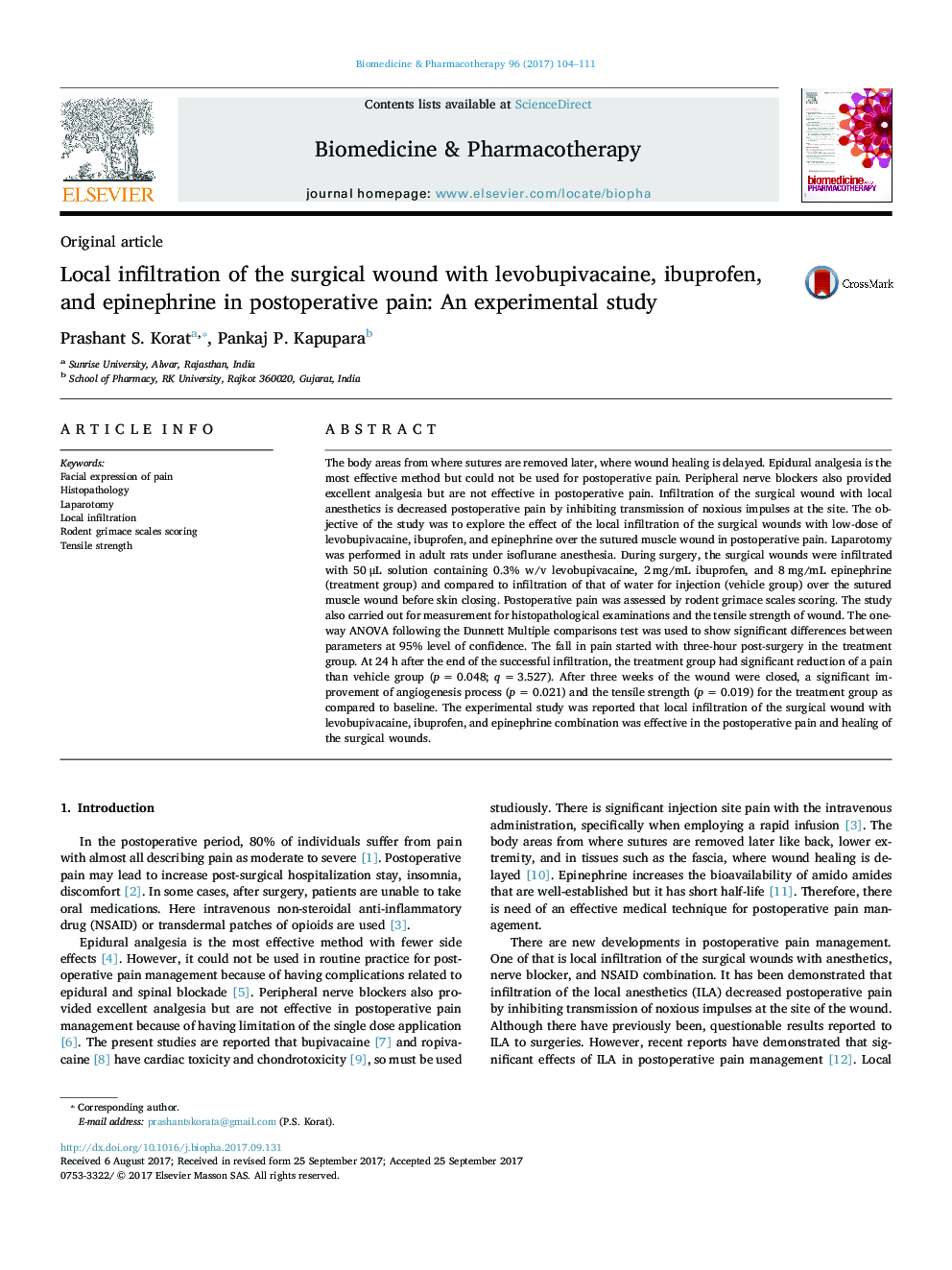| کد مقاله | کد نشریه | سال انتشار | مقاله انگلیسی | نسخه تمام متن |
|---|---|---|---|---|
| 5552433 | 1557946 | 2017 | 8 صفحه PDF | دانلود رایگان |
- Epidural analgesia and peripheral nerve blockers are the most effective method but cannot use for postoperative pain.
- Infiltration of the surgical wound with local anesthetics can decrease postoperative pain.
- In local infiltration of the surgical wounds, levobupivacaine has been reported to have significant effects on wound healing.
- Ibuprofen inhibits the production of COX-1 and COX-2 at the site of injury.
- Epinephrine delays systematic absorption of levobupivacaine and Ibuprofen.
The body areas from where sutures are removed later, where wound healing is delayed. Epidural analgesia is the most effective method but could not be used for postoperative pain. Peripheral nerve blockers also provided excellent analgesia but are not effective in postoperative pain. Infiltration of the surgical wound with local anesthetics is decreased postoperative pain by inhibiting transmission of noxious impulses at the site. The objective of the study was to explore the effect of the local infiltration of the surgical wounds with low-dose of levobupivacaine, ibuprofen, and epinephrine over the sutured muscle wound in postoperative pain. Laparotomy was performed in adult rats under isoflurane anesthesia. During surgery, the surgical wounds were infiltrated with 50 μL solution containing 0.3% w/v levobupivacaine, 2 mg/mL ibuprofen, and 8 mg/mL epinephrine (treatment group) and compared to infiltration of that of water for injection (vehicle group) over the sutured muscle wound before skin closing. Postoperative pain was assessed by rodent grimace scales scoring. The study also carried out for measurement for histopathological examinations and the tensile strength of wound. The one-way ANOVA following the Dunnett Multiple comparisons test was used to show significant differences between parameters at 95% level of confidence. The fall in pain started with three-hour post-surgery in the treatment group. At 24 h after the end of the successful infiltration, the treatment group had significant reduction of a pain than vehicle group (p = 0.048; q = 3.527). After three weeks of the wound were closed, a significant improvement of angiogenesis process (p = 0.021) and the tensile strength (p = 0.019) for the treatment group as compared to baseline. The experimental study was reported that local infiltration of the surgical wound with levobupivacaine, ibuprofen, and epinephrine combination was effective in the postoperative pain and healing of the surgical wounds.
161
Journal: Biomedicine & Pharmacotherapy - Volume 96, December 2017, Pages 104-111
